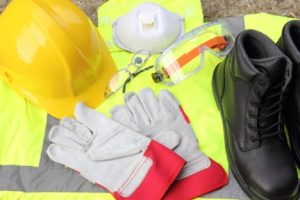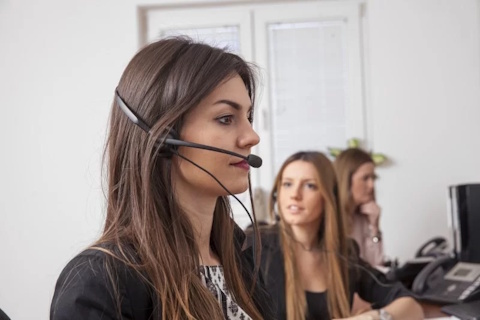According to ROSPA, around 2.7 million people end up in A&E following accidents in the home. Their data worryingly also suggests that every year household accidents result in up to 6,000 deaths. In this article, you’ll read some important tips on avoiding common household accidents including those caused by fires and falls as well as those sustained in different rooms in your house.
Hopefully, the information we provide will go some way to helping you create a safer environment for you and your loved ones.
Kitchen safety
While the kitchen is often a hub of activity in many homes, it can also be the most dangerous. Here are some safety tips that can help to reduce the risk of kitchen accidents:
Preventing slips and falls in the kitchen
- Clean up spills immediately – If you spill anything in the kitchen, it’s a good idea to clean it up quickly.
- De-clutter your kitchen – Ideally, you should be able to move around your kitchen with ease. As such, it’s a good idea to move trip hazards such as bins and storage containers to the side of the room.
- Repair damaged flooring – Torn lino and chipped kitchen tiles are common trip hazards. Therefore, try to replace or repair damaged kitchen flooring where possible.
Preventing burns and fires
- Keep an eye on your cooking – Always stay in the kitchen while cooking a meal, especially if it’s on high heat or an open flame.
- Keep flammable items away from the stove – This includes towels, curtains and oven gloves.
- Install smoke detectors – These can provide an early warning that something has gone wrong. Additionally, you could have a fire blanket or fire extinguisher in your kitchen to help deal with fires before they escalate.
- Use professional installers – Ensure any kitchen appliances are installed by professional fitters. This includes using Gas Safe registered engineers when having an oven installed.
Avoiding cuts
- Use knives properly – It is a good idea to learn proper knife handling techniques and always cut away from your body.
- Store knives safely – Store knives in a knife block or on a magnetic strip, and out of reach of children.
- Use a cutting board – Always use a cutting board with a non-slip surface to prevent it from sliding while you’re cutting.
These steps are just some of the ways you could make your kitchen a much safer place and reduce the risk of kitchen-related injuries.
Bathroom safety
Accidents in bathrooms are perhaps more common than you might think. The mix of water, slippery surfaces and sharp objects can lead to a range of accidents. The following are some tips on avoiding common bathroom accidents at home.
Preventing slips and falls in the bathroom
- Install grab bars – Installing a grab bar in shower cubicles, near a bath or by the toilet can massively reduce the risk of bathroom falls. This is especially true when thinking about elderly, frail or disabled householders.
- Use non-slip mats – A good quality non-slip bathmat is essential. They should be placed near baths and shower cubicles to help avoid slips and falls.
- Ensure proper lighting – Good lighting can make it easier to see water on the bathroom floor which could reduce the risk of a fall. While some bathrooms will receive enough natural light during the day, the installation of good-quality spotlights might also be necessary.
Avoiding burns
- Set the thermostat to a safe temperature – According to the Health and Safety Executive (HSE), water heaters should be set to at least 60°C to reduce the risk of legionella and should reach the taps at around 50°C. If your water temperature is set higher, you could be at risk of being scalded. It’s worth speaking to a qualified plumber if you’re unsure how to adjust the hot water thermostat.
- Test the water temperature – Before jumping into the bath or shower, you should always test the water is not too hot. This is especially true when bathing a child or elderly relative.
Child safety
- Keep hazards out of reach – If you store medicine, cleaning products or sharp objects (like razors), they should be stored in cabinets that are out of reach of the child or in a locked bathroom cabinet.
- Lock bathroom windows – If you have a bathroom window that could be reached if your child climbs onto the bath or toilet, ensure they are locked.
While some of these steps might seem over the top, they can go some way to making your bathroom a much safer place.
Living room and bedroom safety
Typically, living rooms and bedrooms are places we use to relax. However, there are still plenty of risks that can be avoided if you take the following steps.
Preventing falls in living rooms and bedrooms
- Secure rugs – Wherever possible, you should use rugs that have non-slip backing especially when placed on tiled or wooden floors.
- Clear clutter – Try to declutter the most common path through your living room and bedroom to try and reduce the number of trip hazards.
- Install handrails on stairs – Install sturdy handrails on stairs and ensure the staircase is well-lit to prevent falls.
- Think about safe cabling – In this modern age, we need more and more plugs to charge our devices. However, try to ensure that plug sockets and extension cables are placed in safe locations to try and prevent trip hazards.
Electrical safety
- Avoid overloading outlets – Don’t plug too many devices into a single outlet as could lead to overheating and increase the risk of household fires.
- Use surge protectors – Using surge protectors can prevent your electrical devices from being damaged if there is a spike in your power supply (caused by a fault or lightning for example).
- Check for damaged cables – If you spot any cuts, kinks or other types of damage to electrical leads, switch the item off at the wall and unplug it. The device may need to be replaced or repaired before being used again.
Furniture safety
- Anchor heavy furniture – Bookshelves, desks, chests of drawers, shoe racks and other items that are at risk of tipping over should ideally be secured to the wall. Many flatpack items will come with hooks to make this easier.
- Keep small items out of reach – Keep small items like buttons, coins and jewellery away from young children to prevent choking hazards.
You can implement these safety strategies at any point but the best time to do so is when you’re decorating or re-arranging your bedroom or living room.
General home safety
Here are some general safety tips on avoiding common household accidents that could be used anywhere around your home.
Fire safety
- Install smoke detectors – Install smoke detectors on every level of your home and test them regularly.
- Have a fire escape plan – Create a fire escape plan and ensure everyone in the household knows what to do in case of a fire.
- Keep a fire extinguisher – Have a fire extinguisher readily available and know how to use it.
Prevent poisoning
- Store chemicals safely – Any chemicals, cleaning products and medications should be stored as safely as possible. This could mean using a lockable cupboard and storing such products out of reach of children.
- Use childproof caps – If you can’t store items such as medication bottles or washing tablet boxes out of reach, you should ensure that any childproof caps are locked into place (usually, you’ll hear a click to confirm this).
- Label containers clearly – Ideally, you should store dangerous substances in their original packaging. If you can’t, you should use labels to clearly identify the contents of any containers used.
Carbon monoxide safety
- Install carbon monoxide detectors – Install carbon monoxide detectors near sleeping areas and check them regularly.
- Ventilate gas appliances – Ensure proper ventilation for gas appliances like stoves and water heaters.
- Service gas appliances regularly – Have your gas appliances serviced regularly by a Gas Safe registered engineer.
Emergency Preparedness
- Keep a first aid kit – It’s always a good idea to have an easily accessible first aid kit packed in your home. You should periodically check its contents to check that they have not become out of date.
- Learn basic first aid – If you’re able to do so, undergoing basic first aid training can be a literal lifesaver. Private courses are often run by organisations like the St John Ambulance or you may be entitled to training at work.
- Prepare emergency contacts – Keep a list of emergency contacts and important information easily accessible. Ensure that all of your family members are aware of your list in case it is you who has been injured.
Hopefully, you’ll never need to worry about anyone being injured in your home but taking some of the steps listed above could significantly reduce the dangers.
Outdoor Safety
Extending safety measures to your outdoor spaces is crucial for preventing accidents in the garden, shed or garage. Some steps you could take to avoid common household accidents in the garden include:
Garden safety
- Store tools safely – Store garden tools and equipment in a secure location such as a lockable shed so that they are out of reach of children.
- Keep paths clear – Try to ensure any pathways, stepping stones or other common routes through your garden are as clear as possible and free from trip hazards.
- Supervise outdoor play – If you have young children, you should supervise them and not leave them to play on their own to avoid the risk of garden accidents.
- Cover ponds – Safety around water should be considered if you have a pond in your garden that is used by children. This may include covering the pond until your children get older.
Garage, shed and workshop safety
- Organise garden equipment – You should try to organise all tools and equipment stored in your garage or shed. Not only will this make it easier to access when needed, but it could reduce the risk of items falling onto you and causing injuries.
- Store flammable materials properly – Store flammable materials in approved containers and away from heat sources. For example, if you have a petrol mower, you should store any fuel in a proper petrol canister containing a Kite Mark or other safety markings.
- Use protective equipment – Always wear appropriate protective equipment, such as gloves and safety glasses when working with tools or chemicals. For example, safety glasses could protect your eyes from flying stones while using a garden strimmer.
The steps listed in this section can help to make your garden a much safer and enjoyable place.
Conclusion
Taking precautions to prevent common household accidents is crucial for ensuring the safety and well-being of everyone in your home. Accidents such as falls, burns, poisoning and cuts are all too common – but many can be easily prevented with simple measures.
Thinking about children, the elderly and other vulnerable individuals should be your priority when implementing safety measures.
Many of the tips on avoiding common household accidents we’ve described in this guide cost very little (or nothing at all). Therefore, there shouldn’t be any barriers in your way when trying to implement household safety measures.
Remember, while it might seem like hard work to assess your home and make changes, implementing such measures can reduce the risk of accidents leading to serious injuries (and fatalities) in your home.



